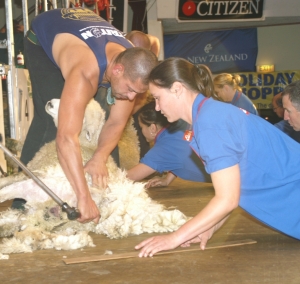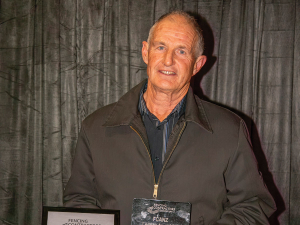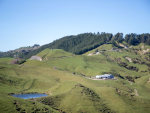With wool exports worth a total of $700 million each year, cutting wool contamination translates into a big opportunity for fibre farmers, says Jeanette Maxwell, Federated Farmers Meat & Fibre spokesperson.
Barry Pullin, President of the NZ Shearing Contractors Association says this is about ownership and pride in New Zealand wool. "There are things we need to do better but a clean shed really does set the scene."
Cutting woolshed contamination could increase farmgate returns, says Maxwell.
"What we know is that inattention is seeing everything from press bars, clothing, fertiliser bags cell phones and even a tennis ball ending up in bales of wool. These are all contaminants.
"While the ultimate cost is being born by farmers, it is a joint responsibility between farmers, shearers and the scourers. We all need to work together because the interests of our customers are our interests."
"We have spoken to Federated Farmers and we are working on 'Keep Calm and Shear On' - a quick fix to wool contamination," says Barry Pullin:
'Keep Calm and Shear On' – five tips to cut wool contamination
1. "A clean shed sets the scene" – Is the shed clear and clean for the shear? Is equipment in good order? Is there an area for shearers to stow their gear off the main work floor? Is there a place for smoko? Is there sufficient newsprint for bin bales?
2. "One press, four bars" – If you need a fifth, or the spare, you need to ask the boss for it. The big hint here is to check the last bale pressed or, 'Lost a press bar? Try the last bale pressed'.
3. "Open and empty" – Because wool packs are sometimes used as giant rubbish bins, they need to be checked before use. "Open and empty" may take a few seconds but it is the simplest way to prevent contaminants like old clothing ending up with the wool.
4. "Only wool in bales. Only newsprint with bin bales" – 'The only thing going into a bale is wool and in bin bales, newsprint for separation'. It really is as simple as that.
5. "Hang it, store it or lose it" – The idea is to eliminate all loose clothing and items being mixed up with wool. Hooks, storage areas and extreme care needs to be taken so that any of these items do not end up being mixed up with the wool. This applies to anyone in the wool shed environment; farmers, farm workers, the shearing team and any visitors.









